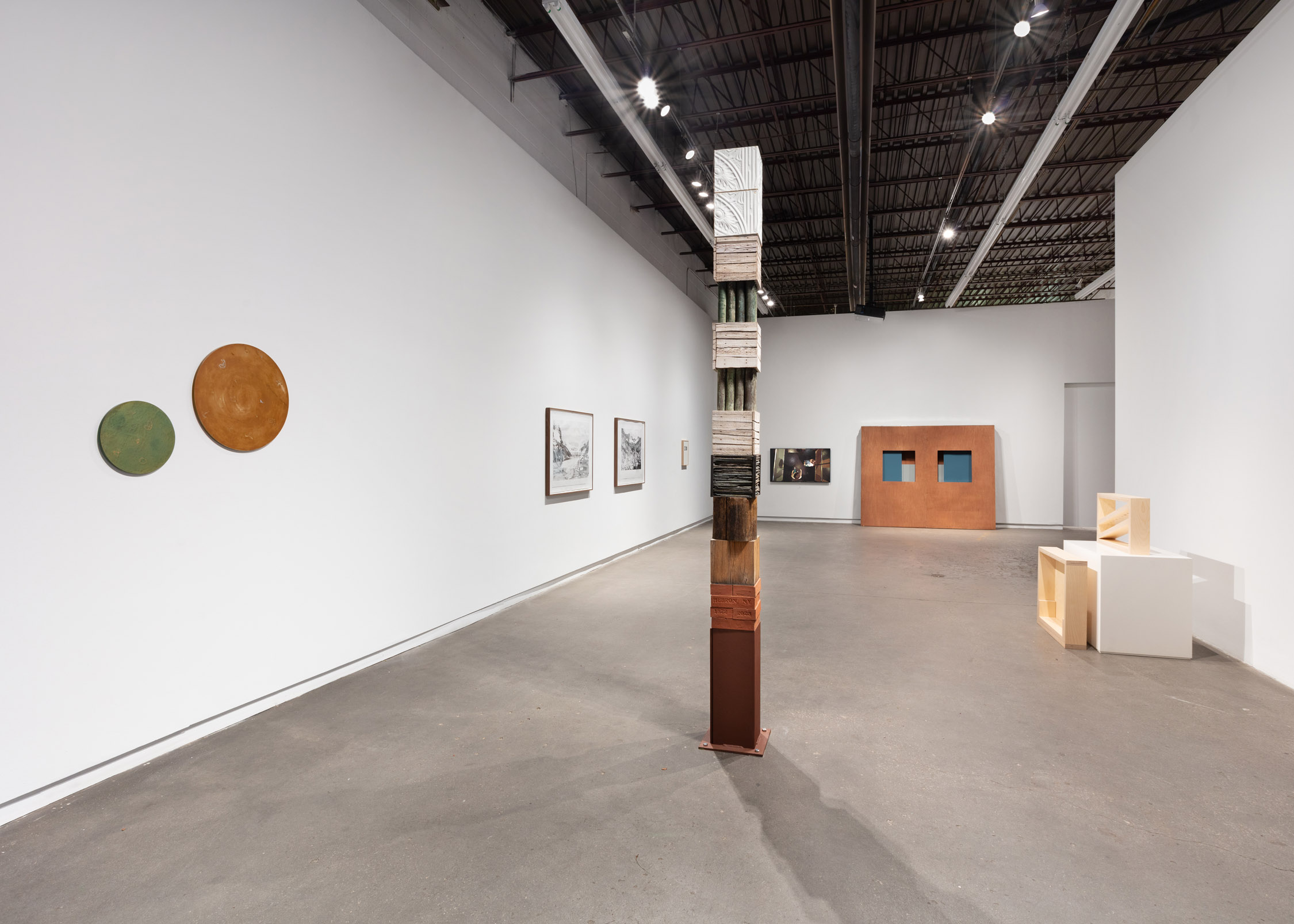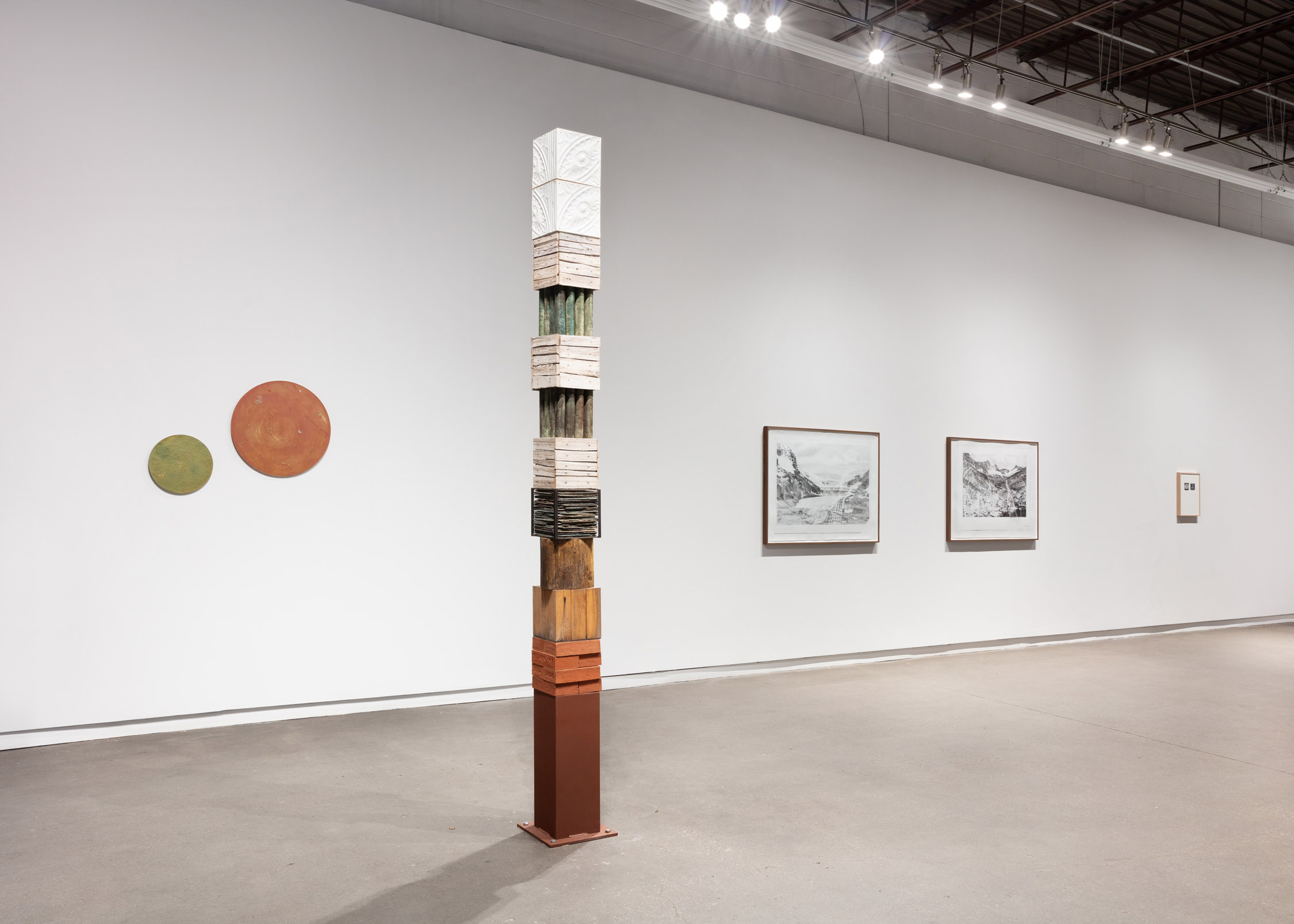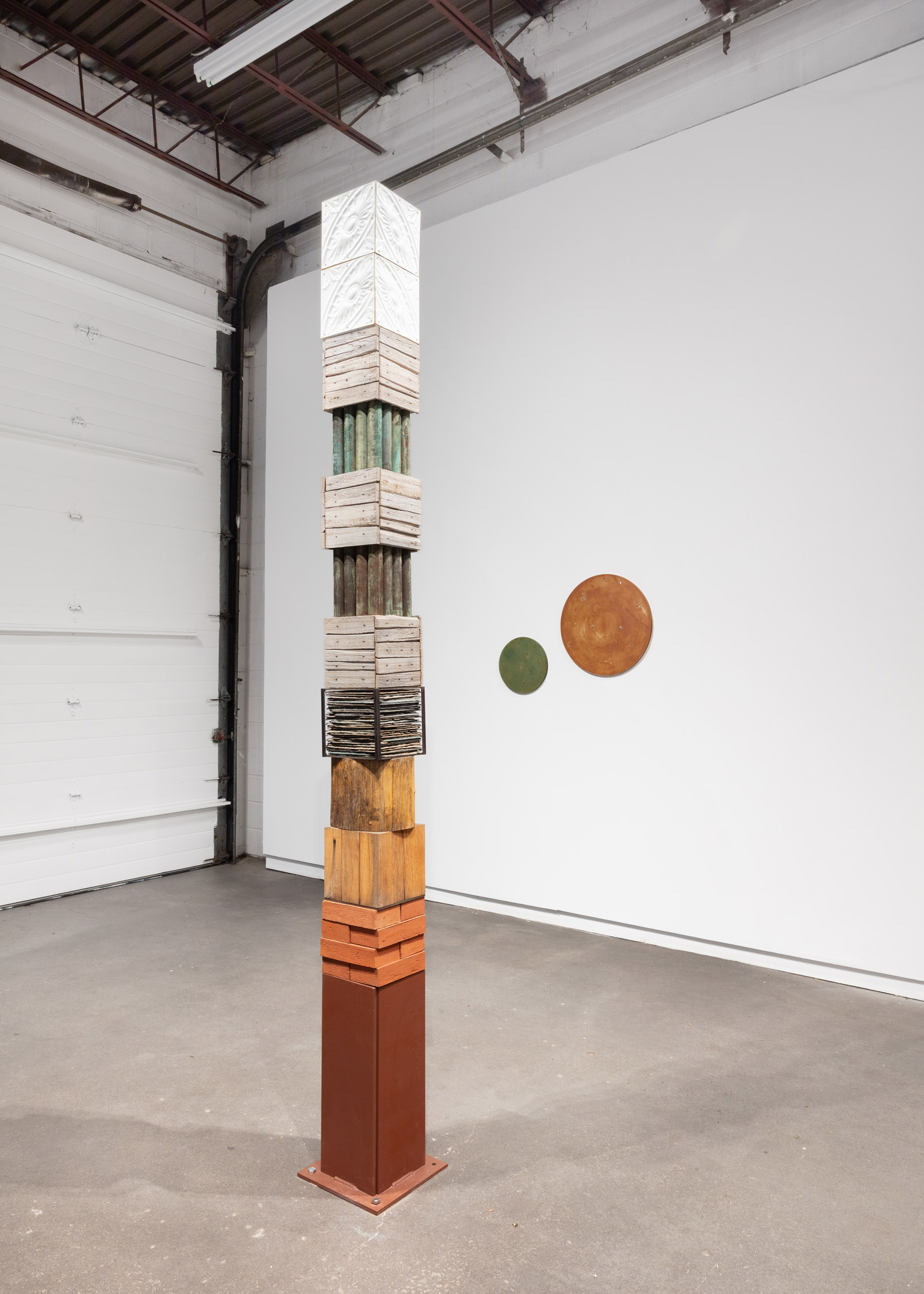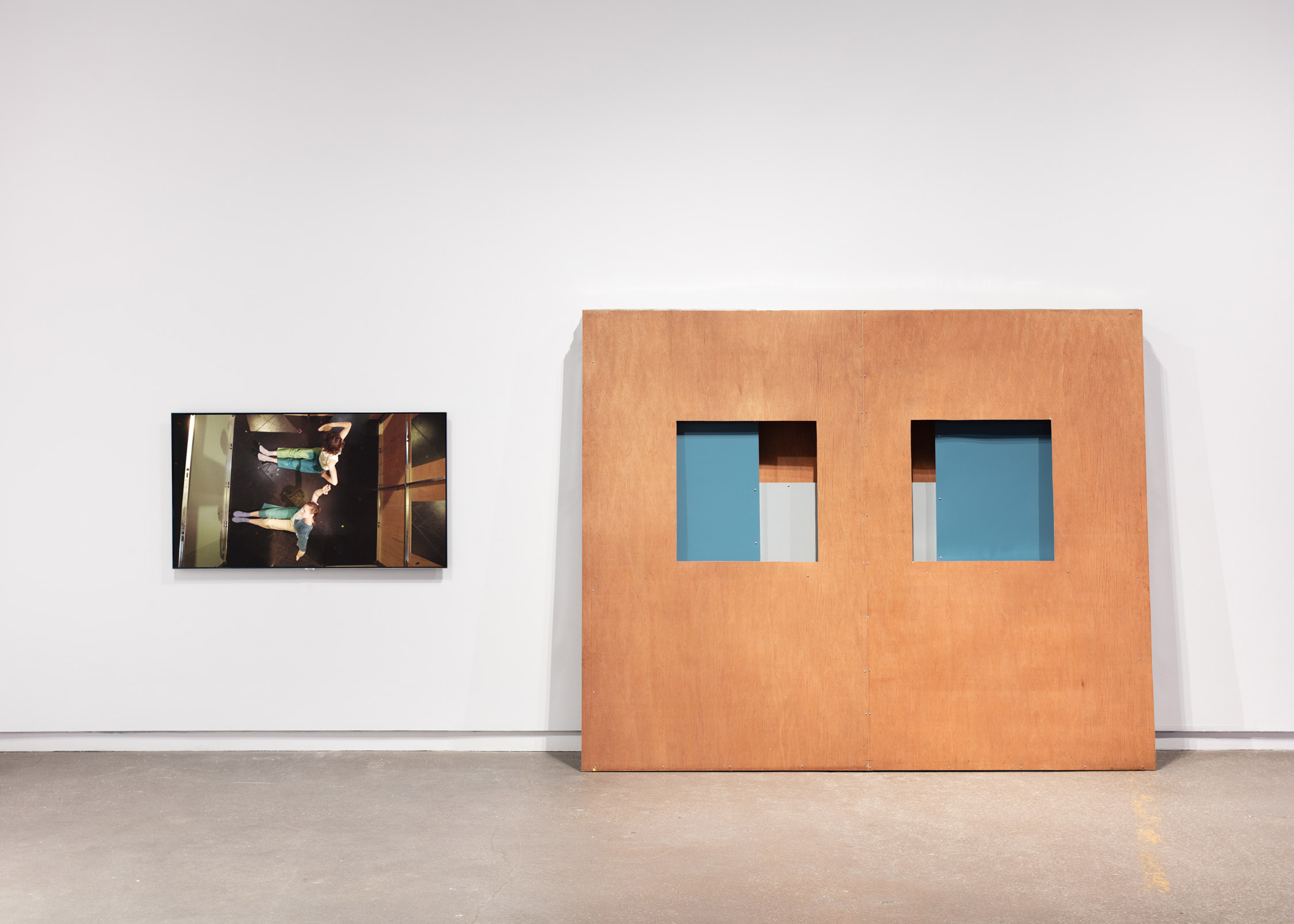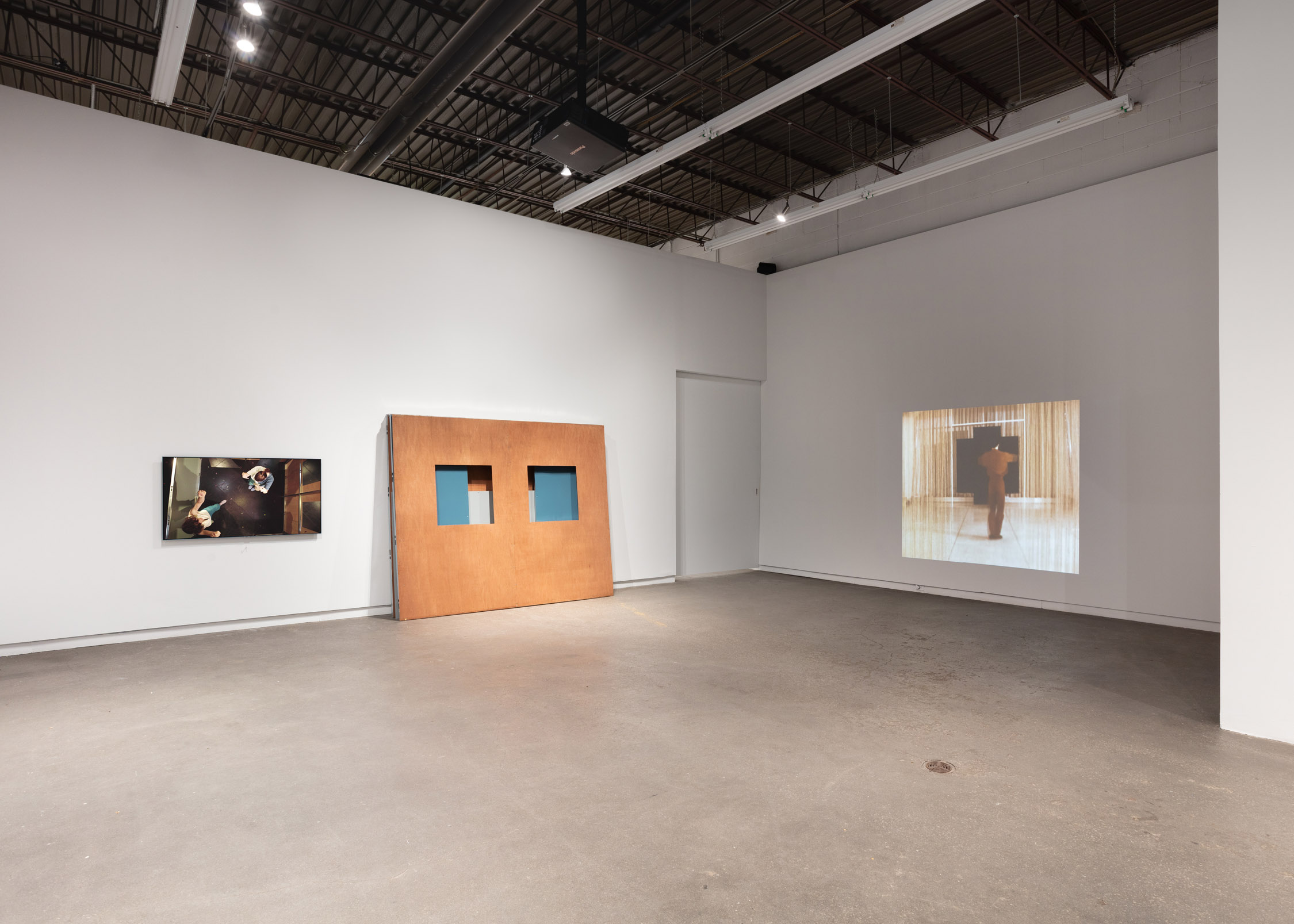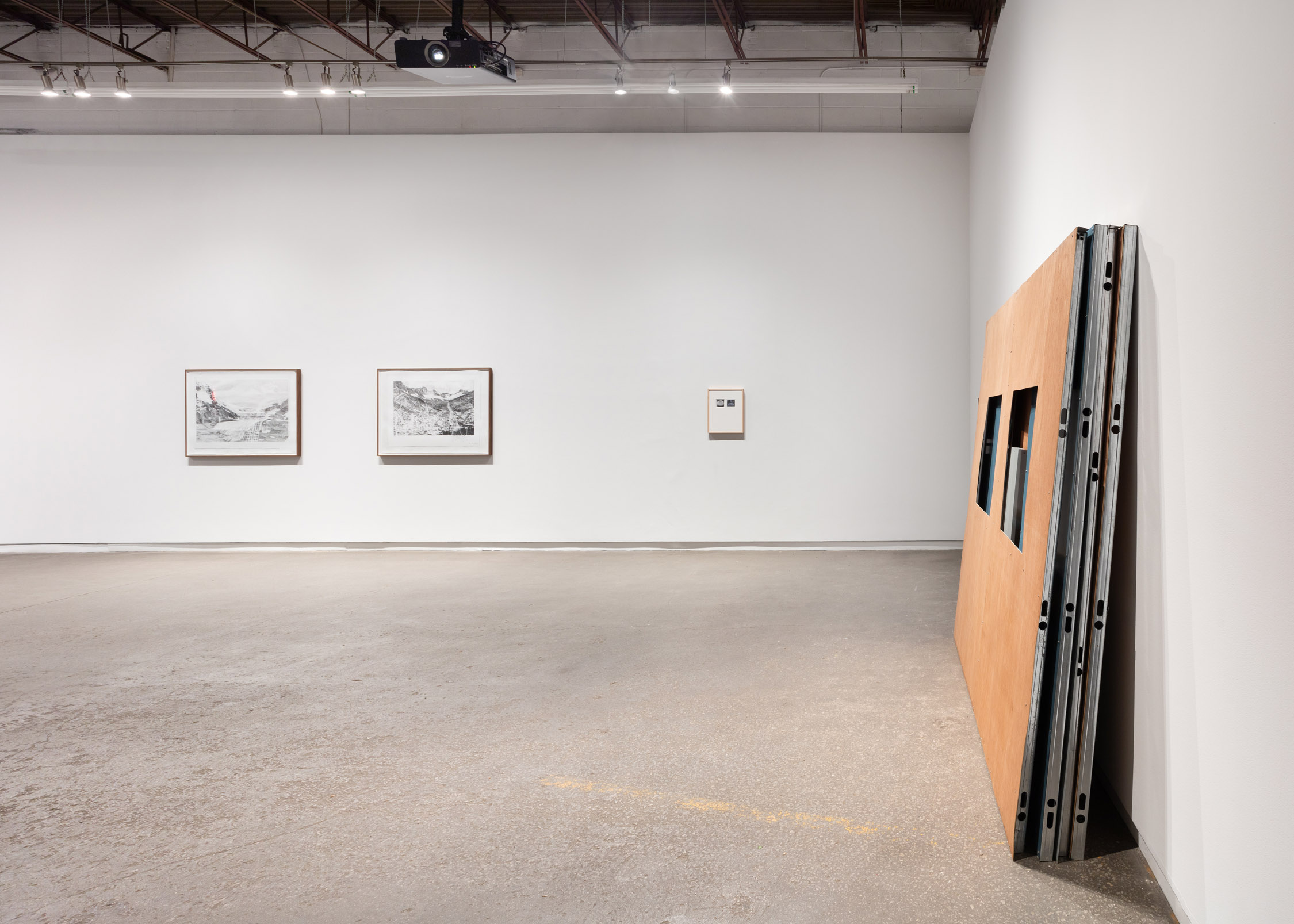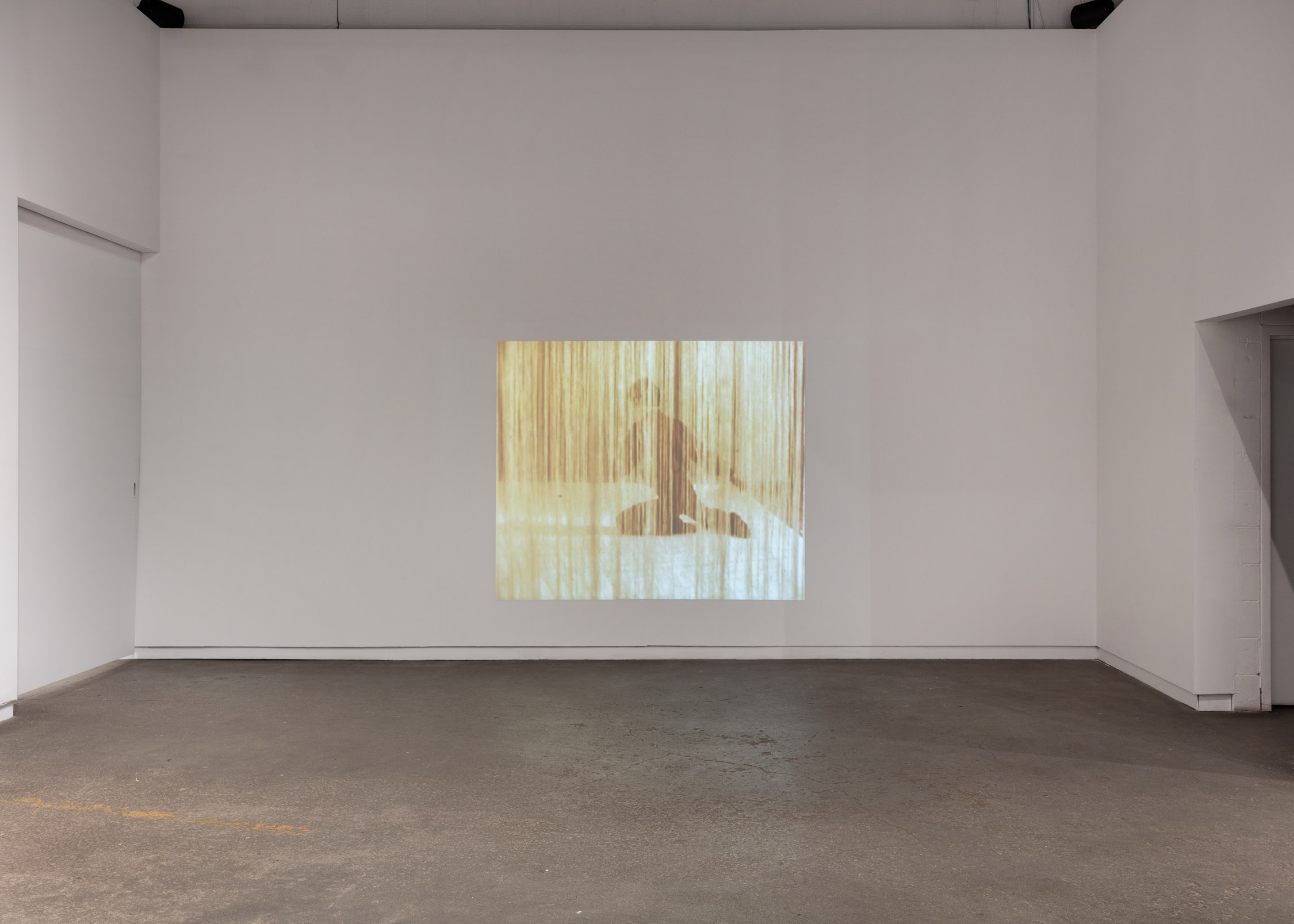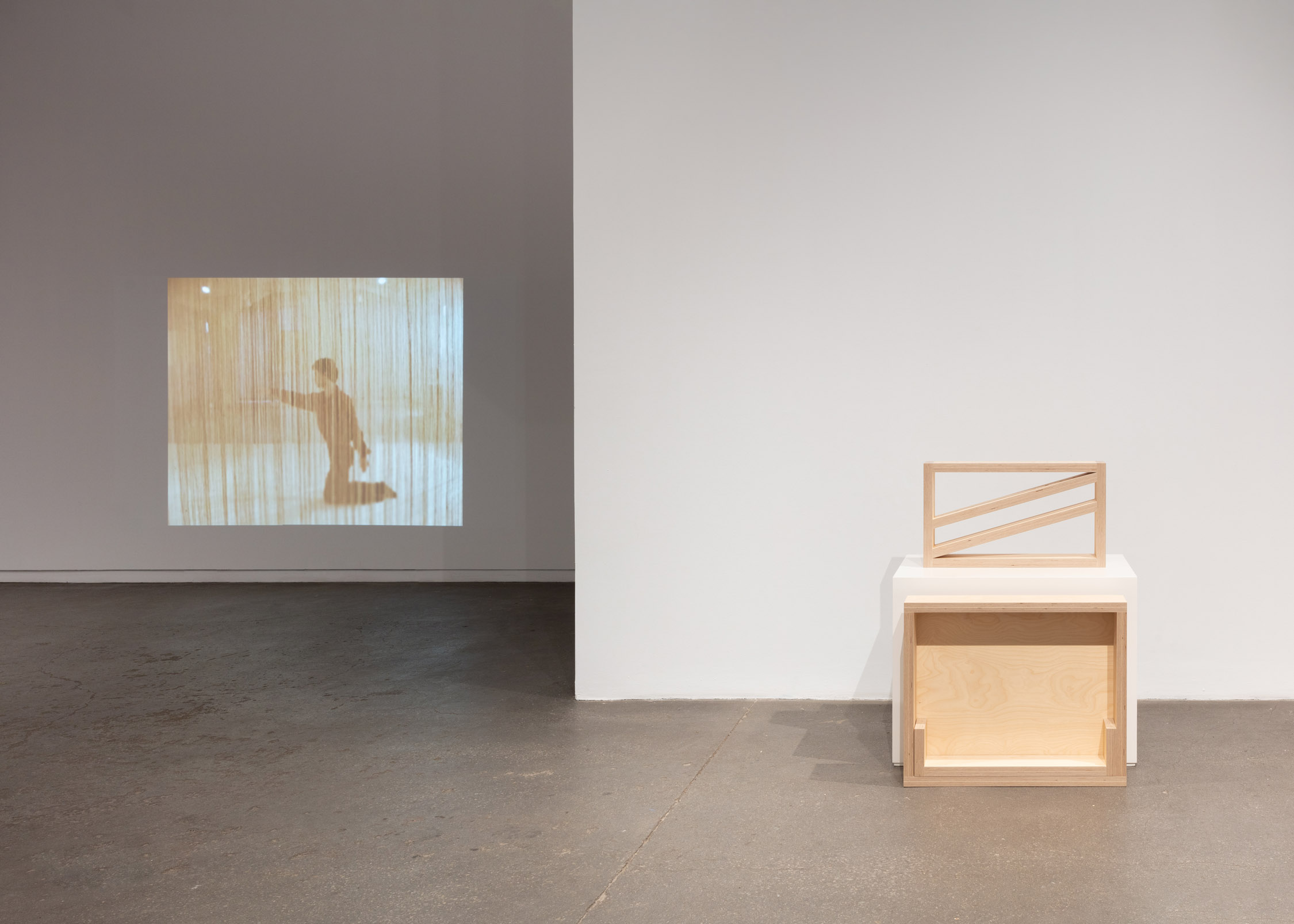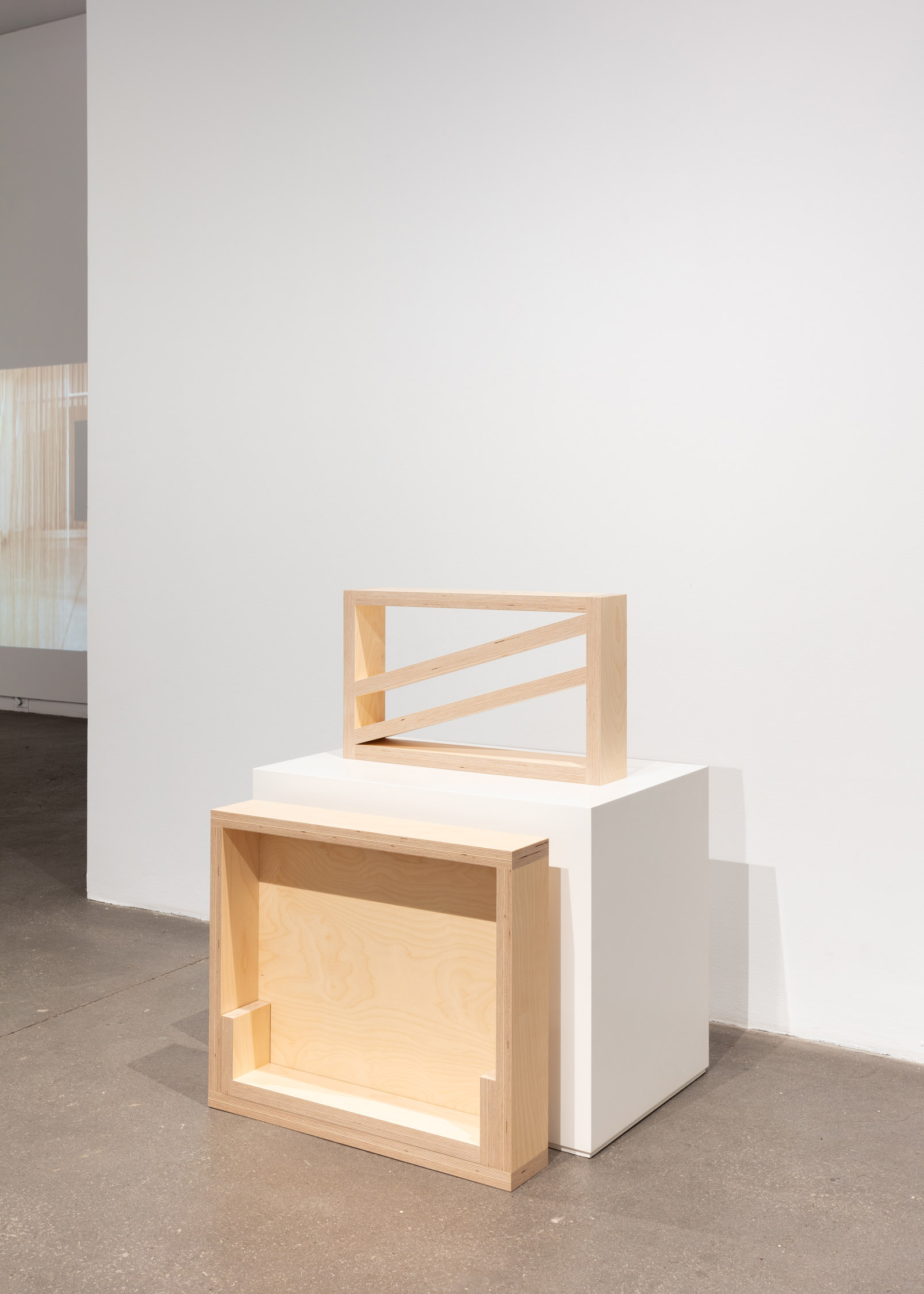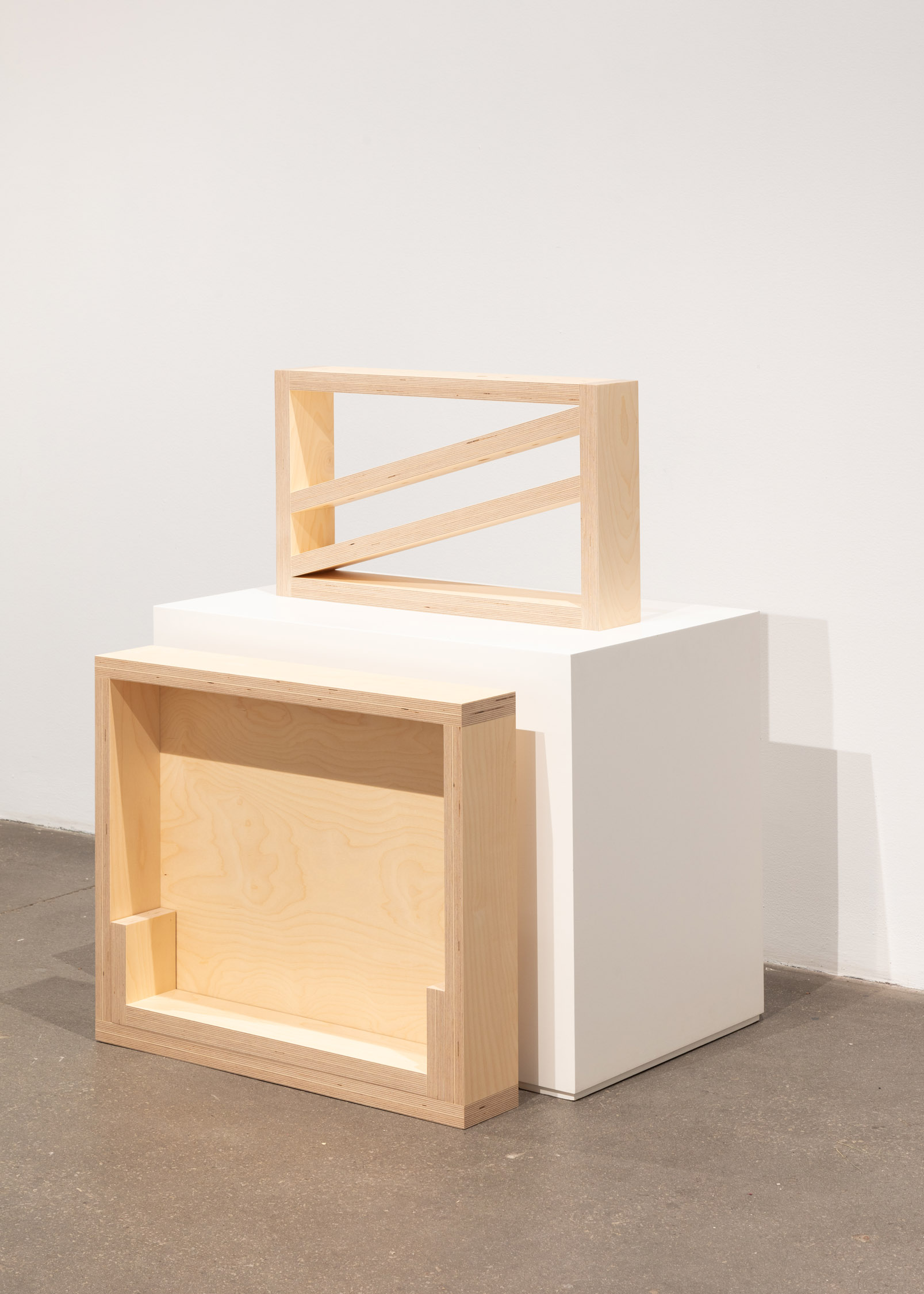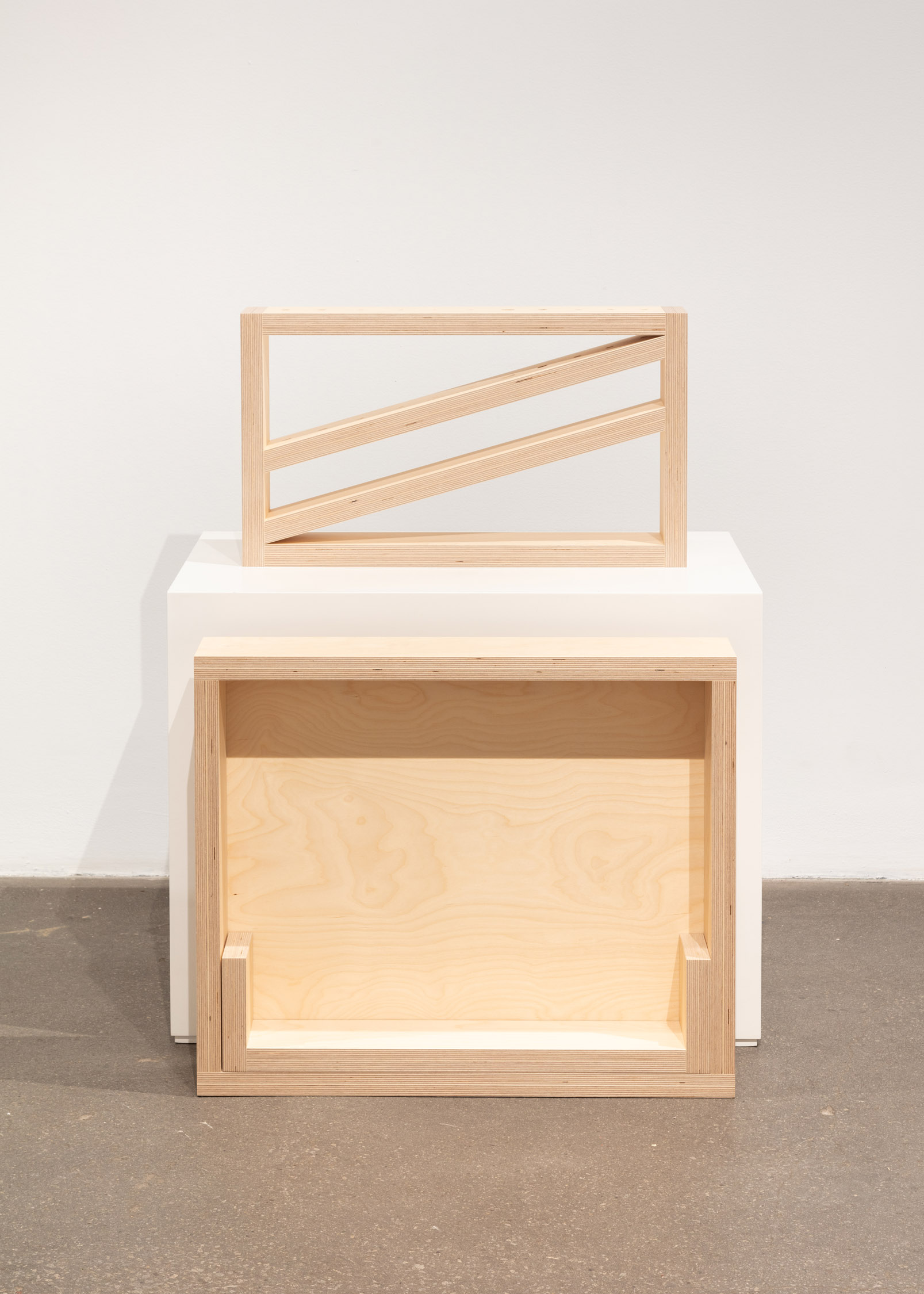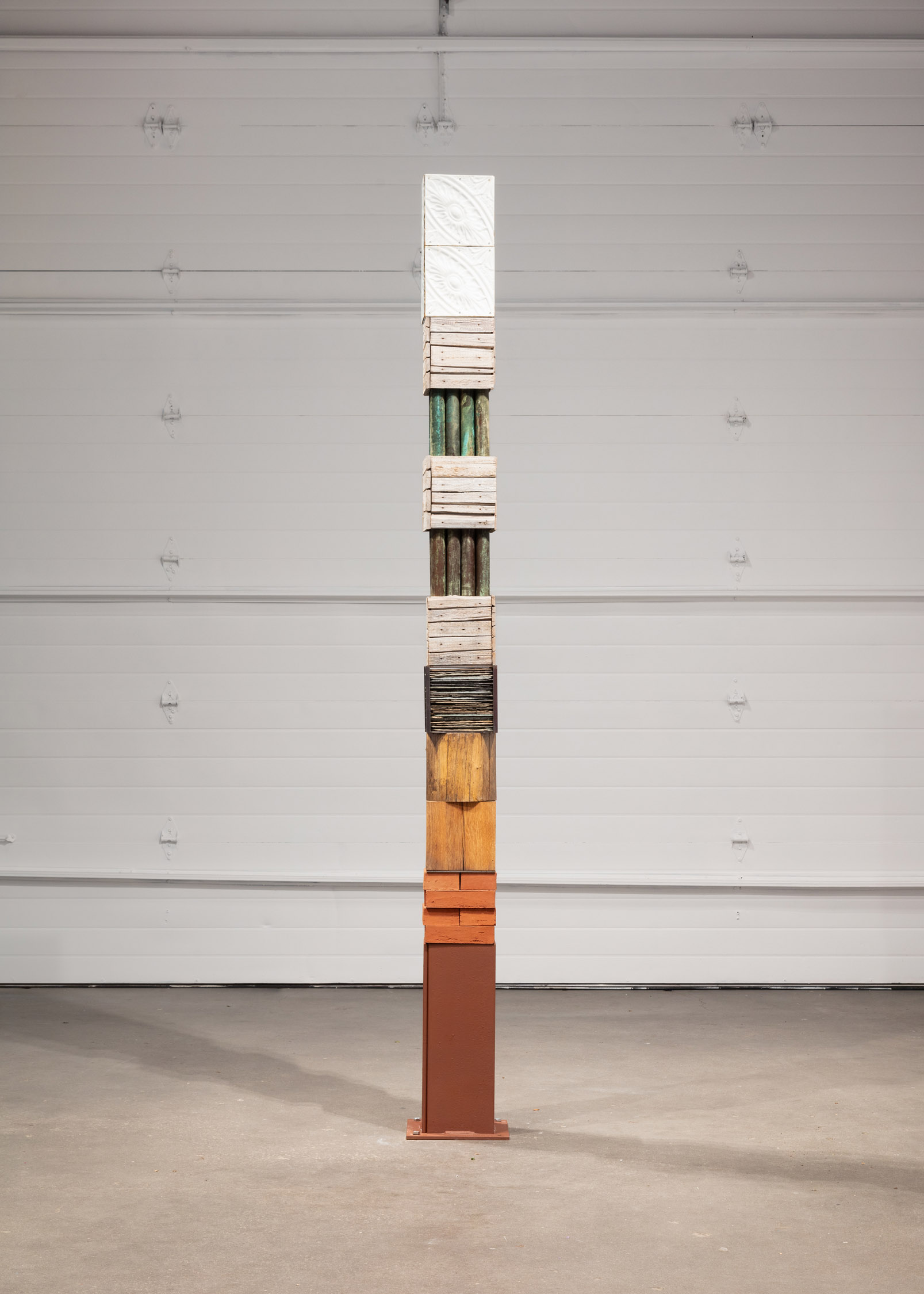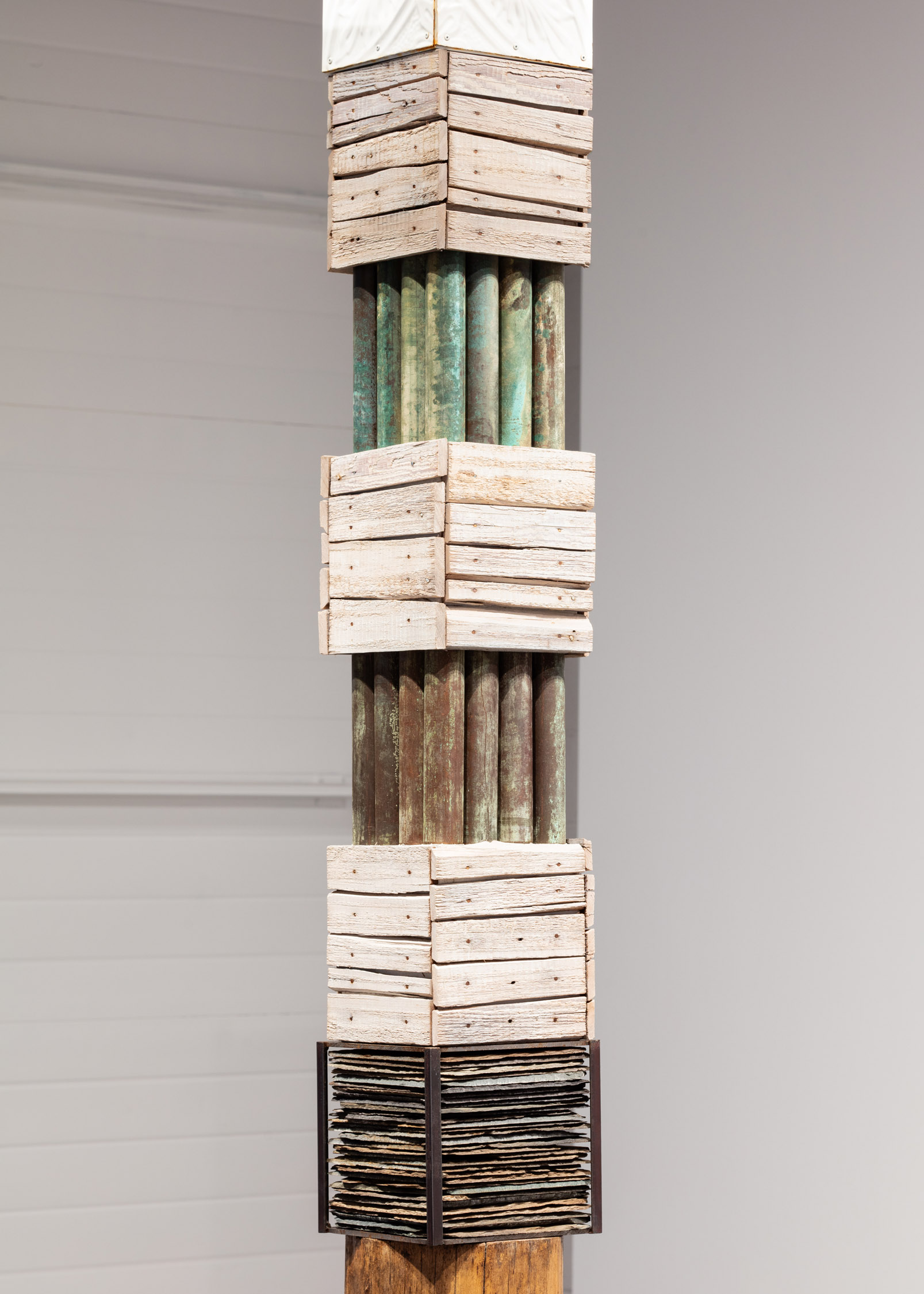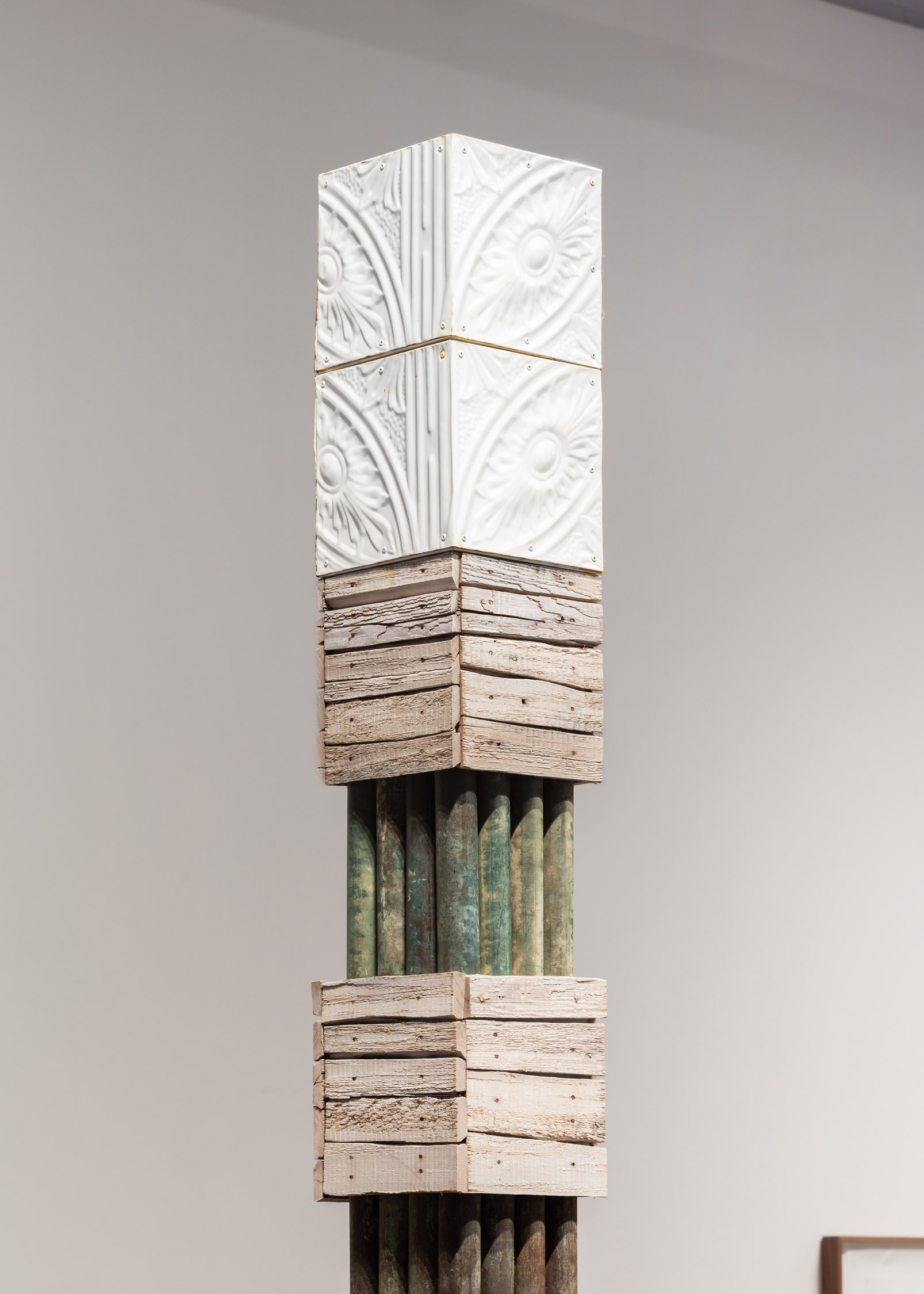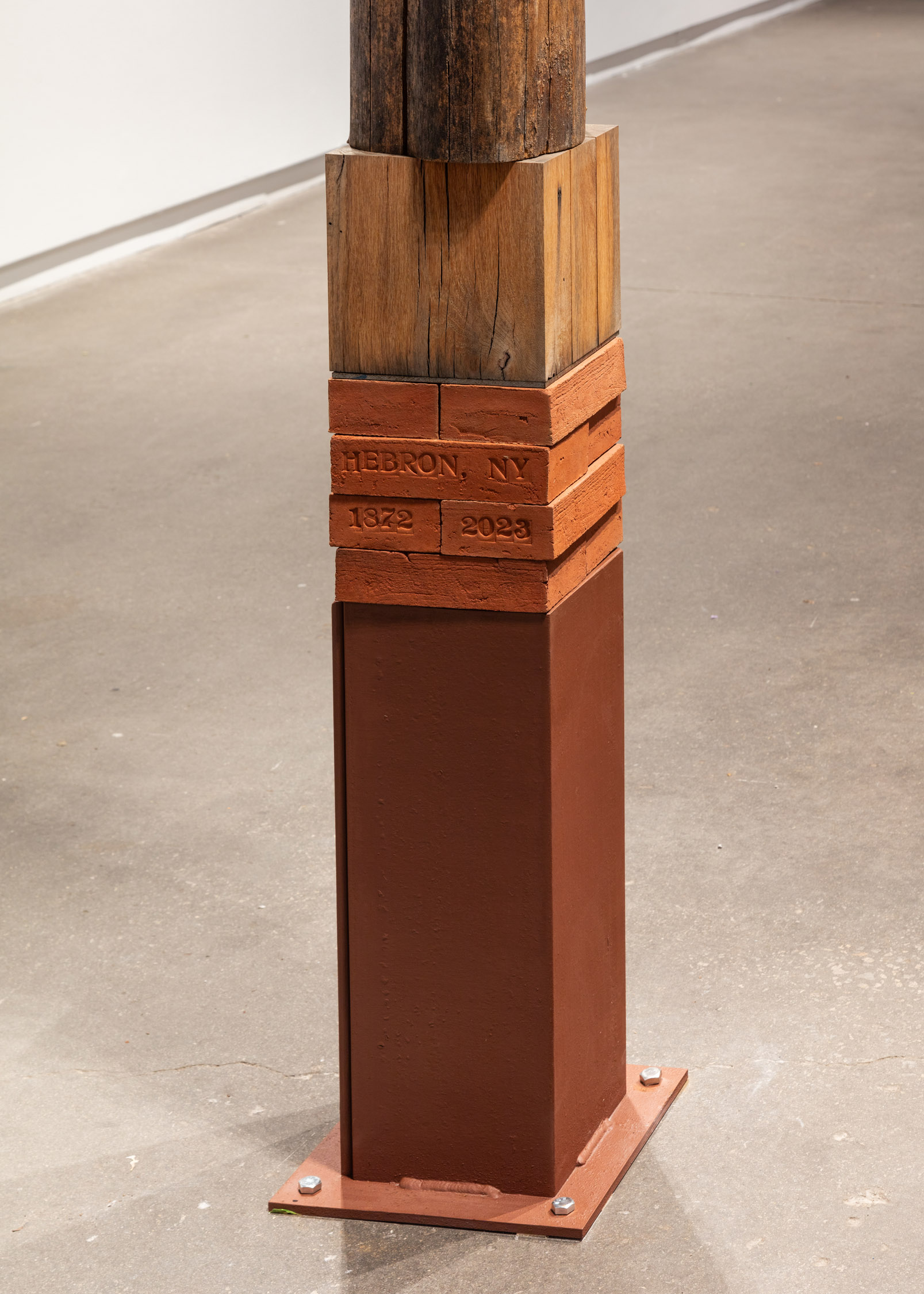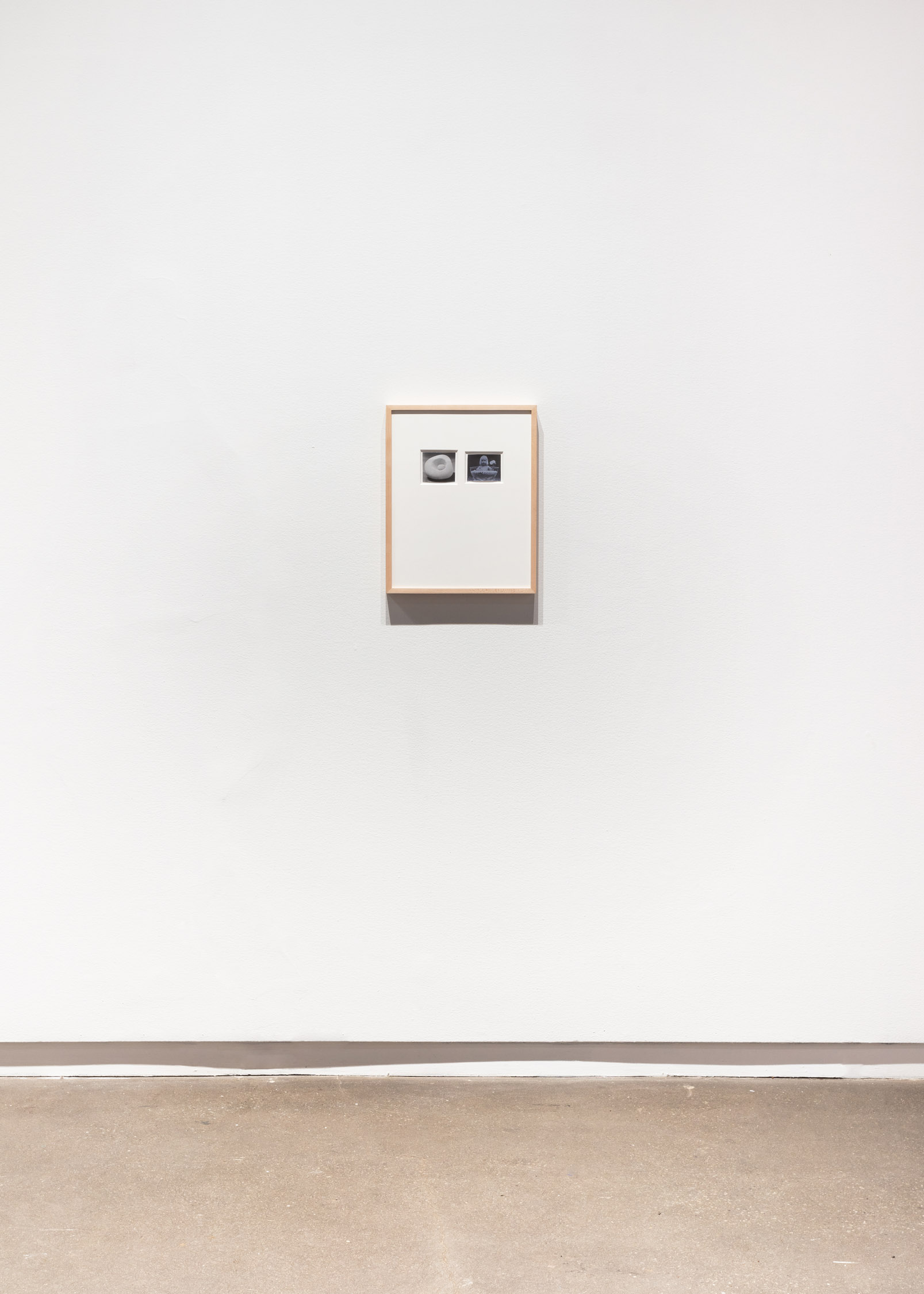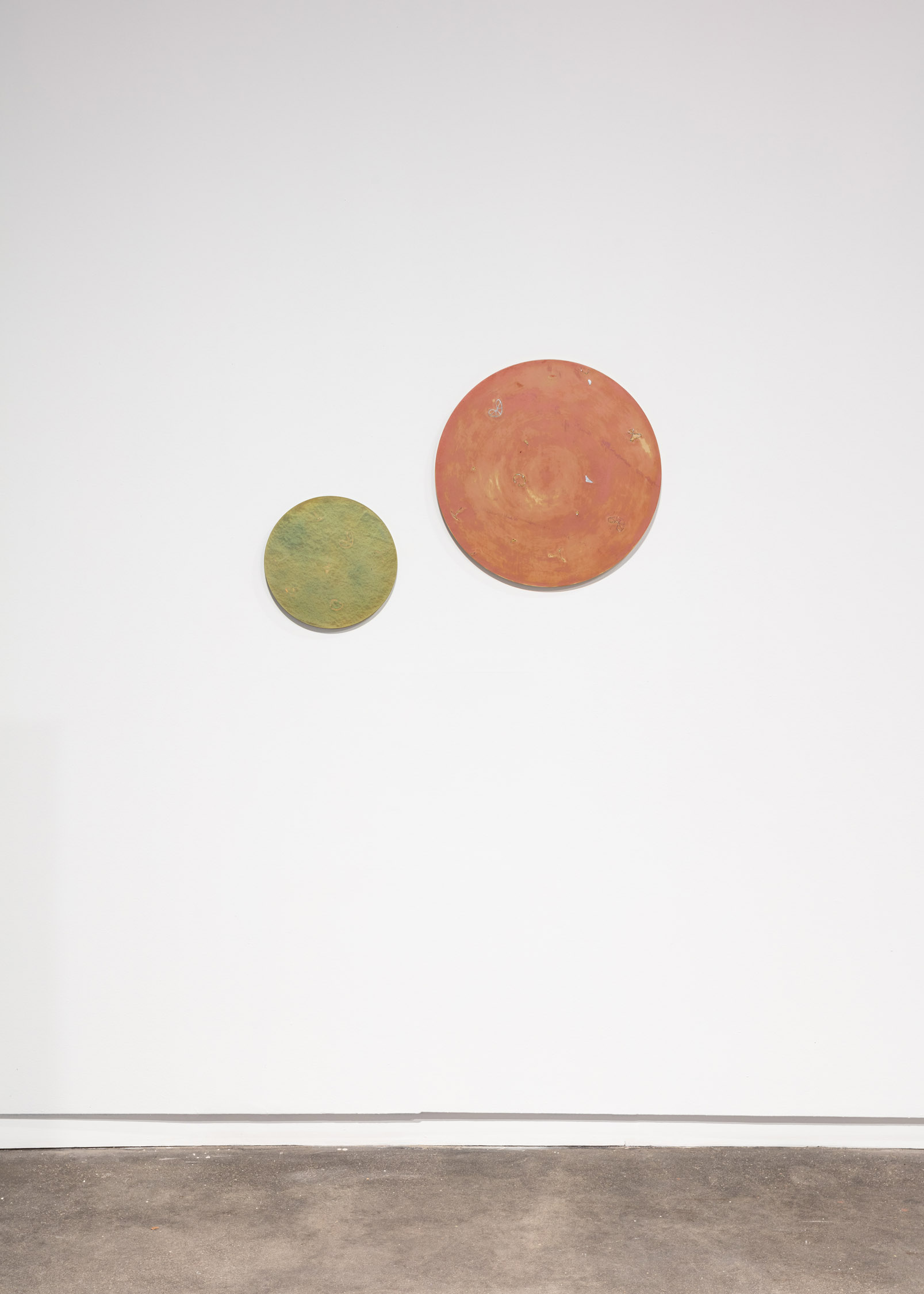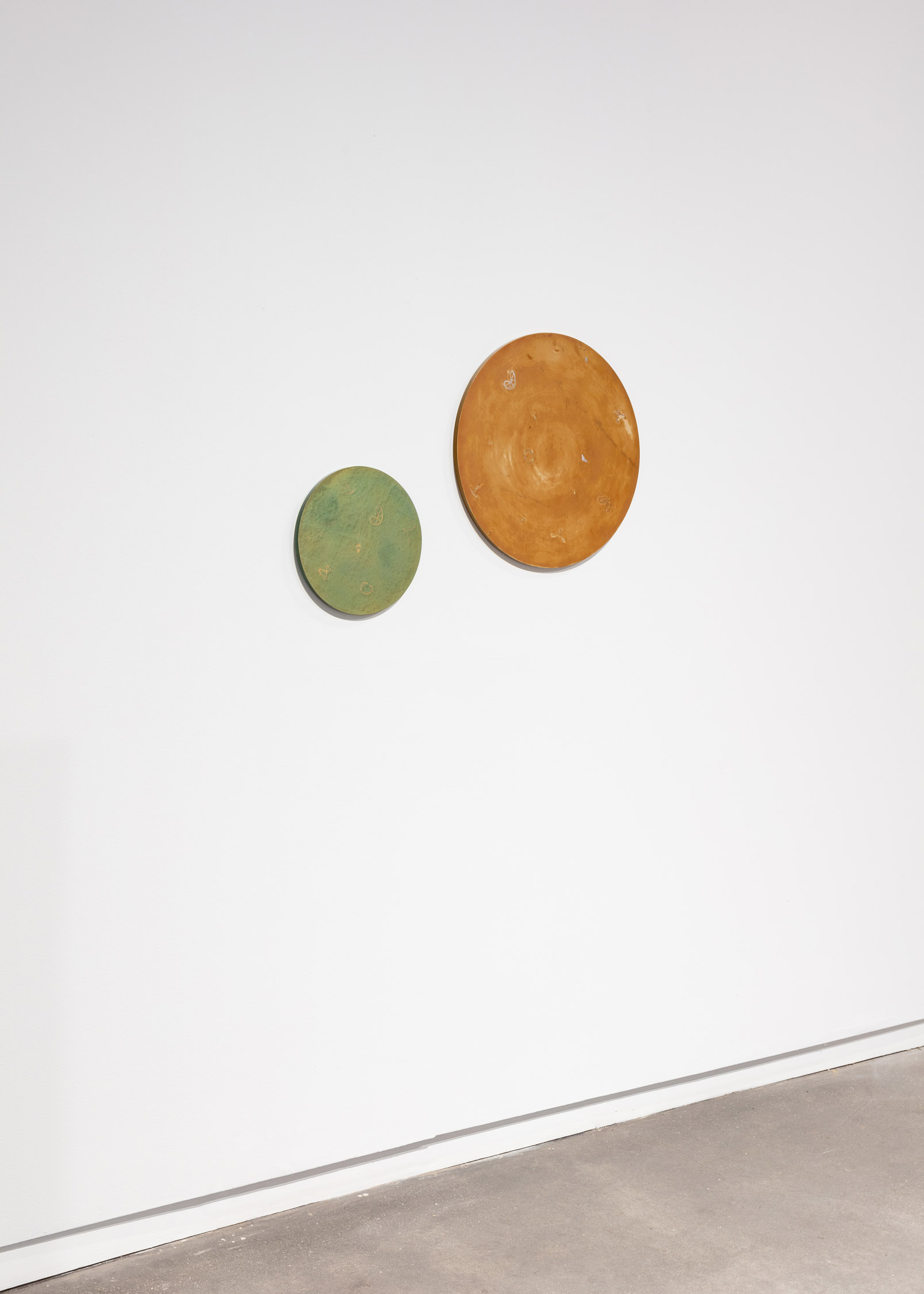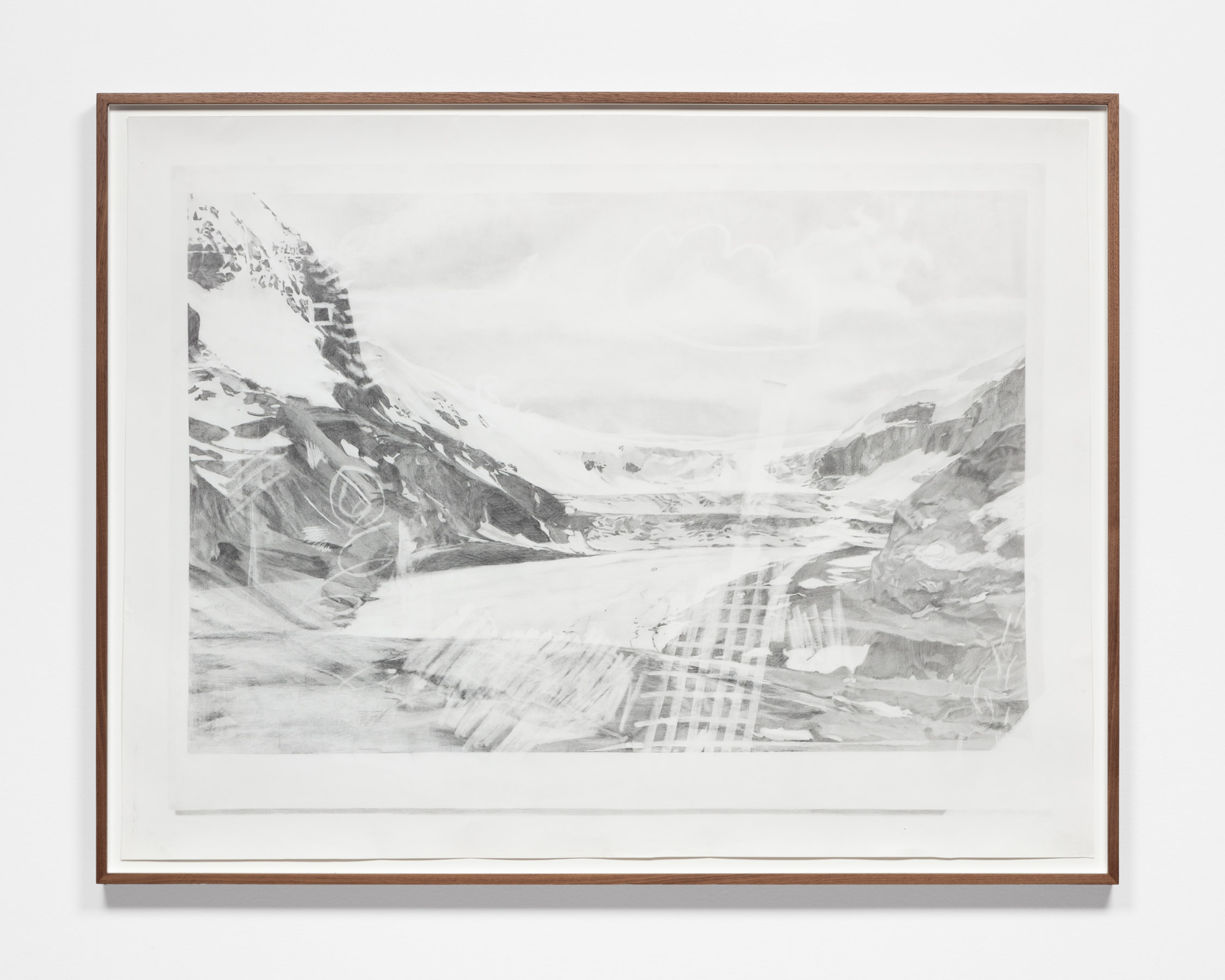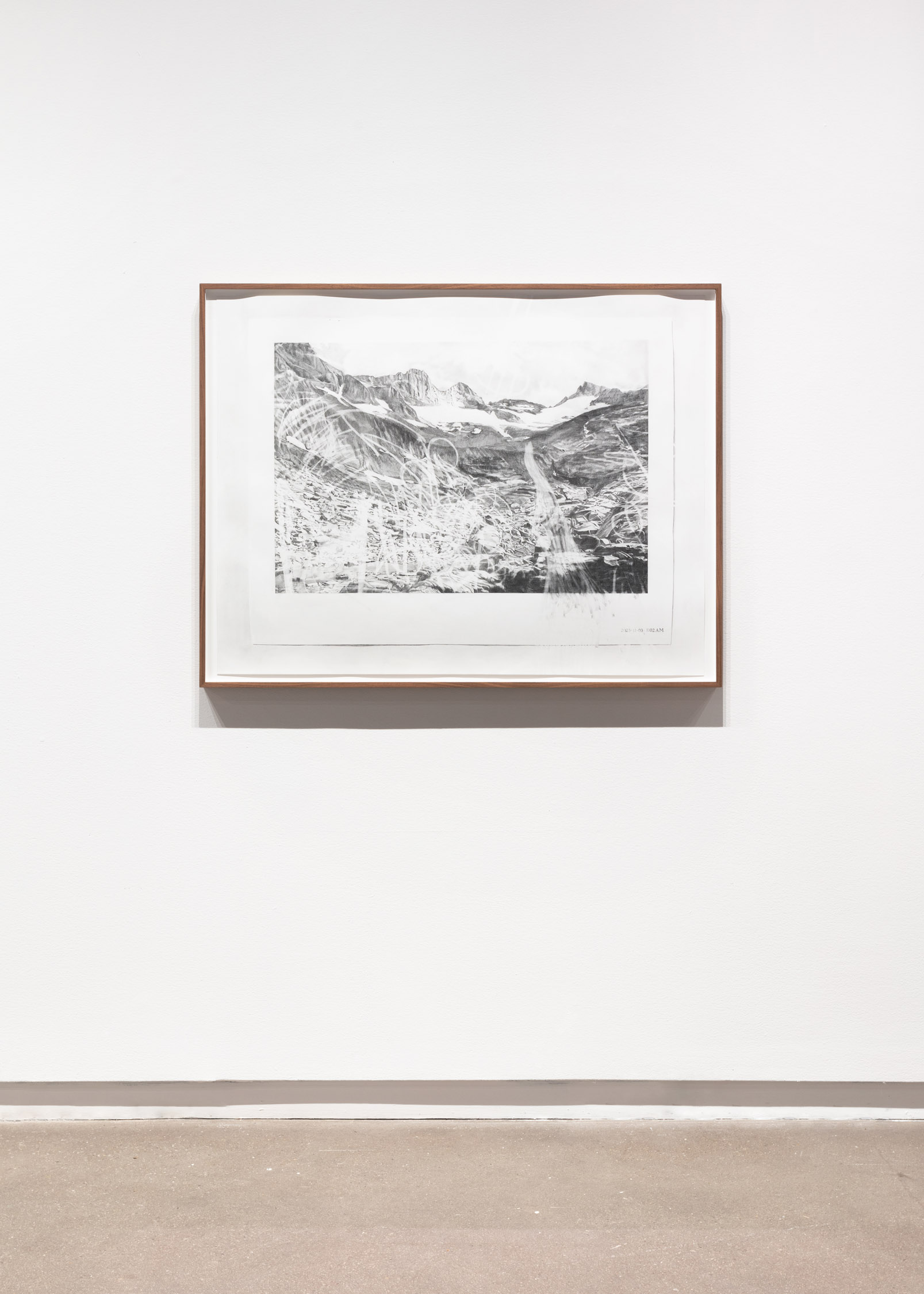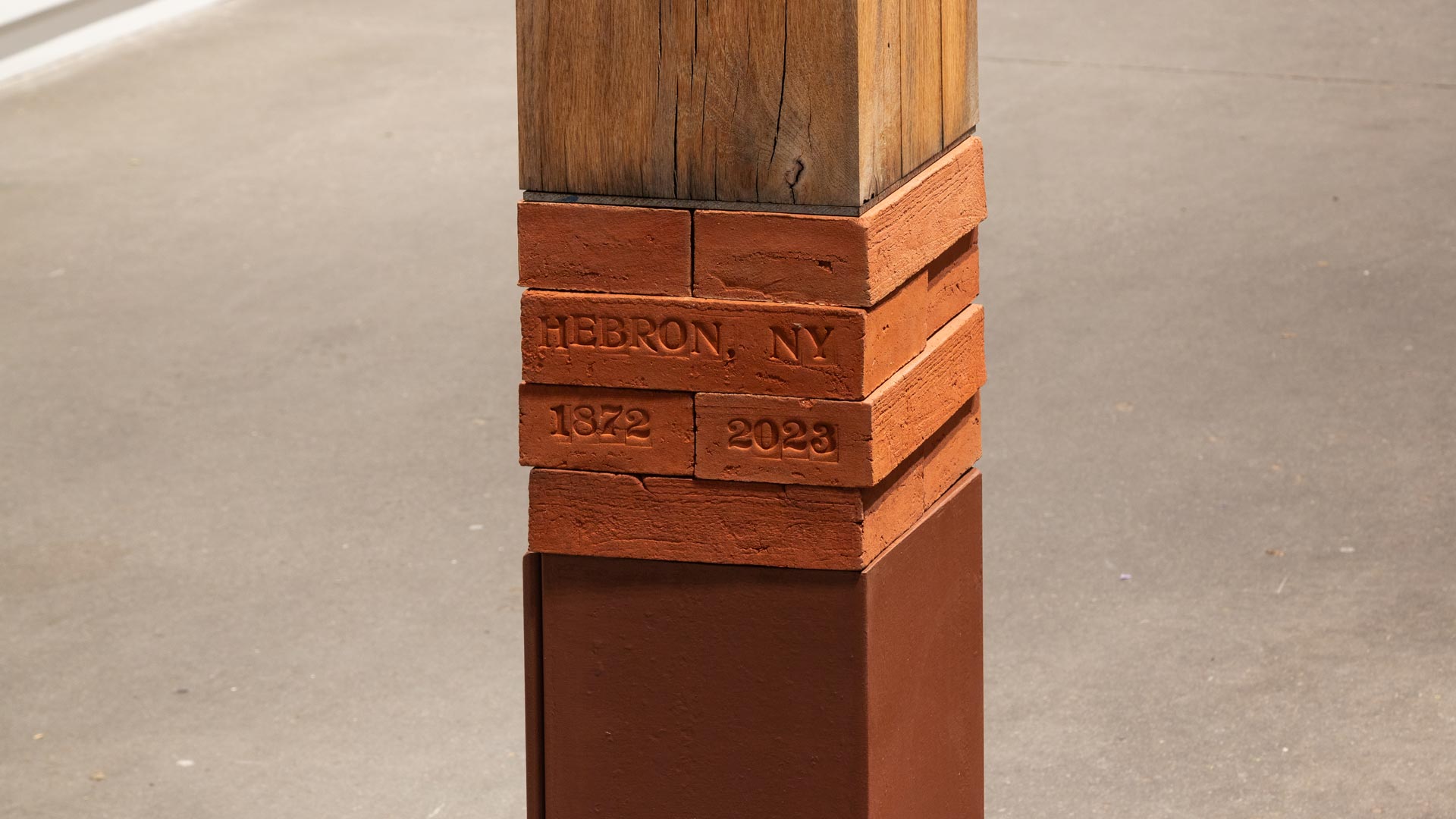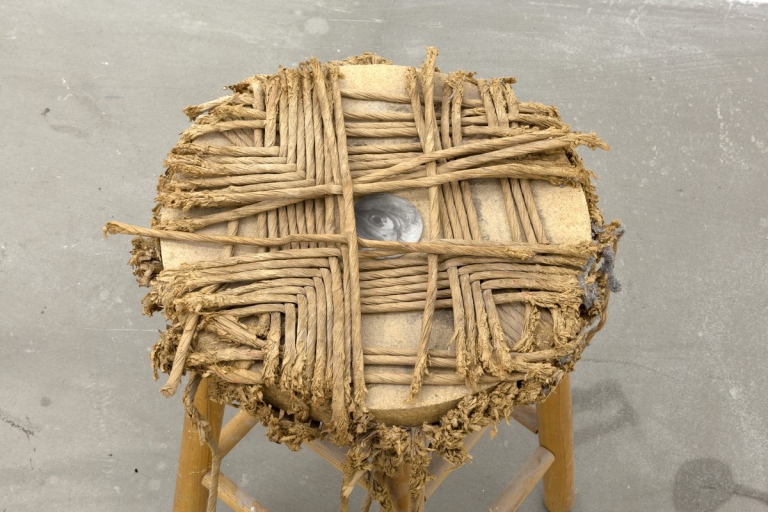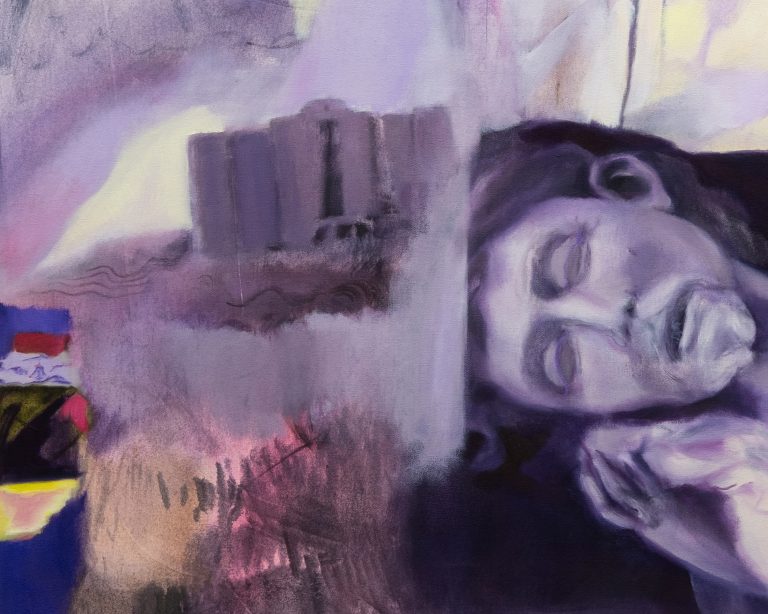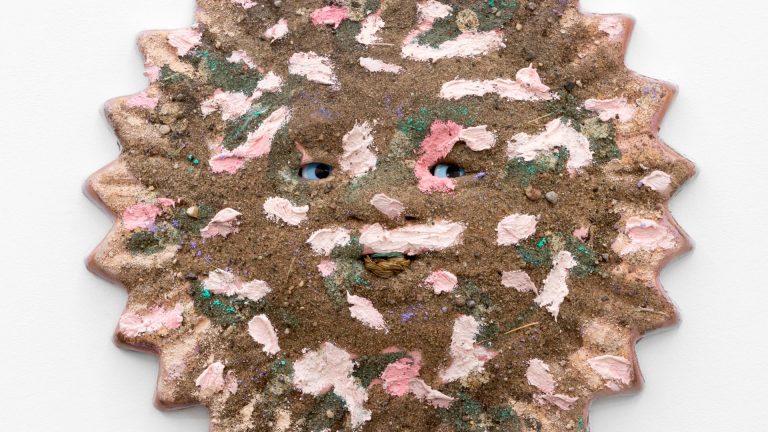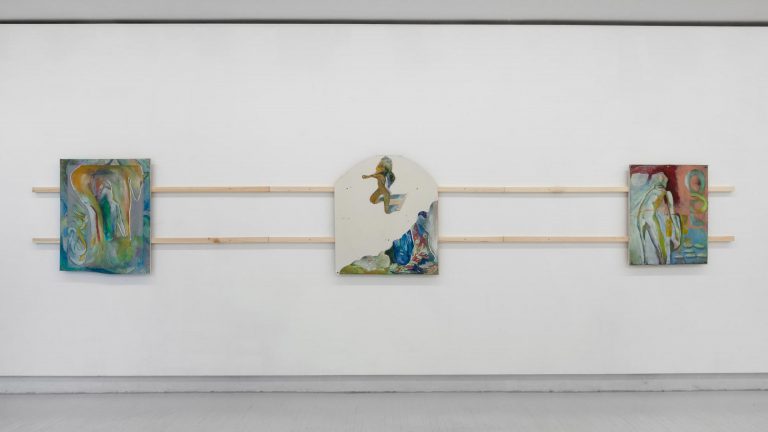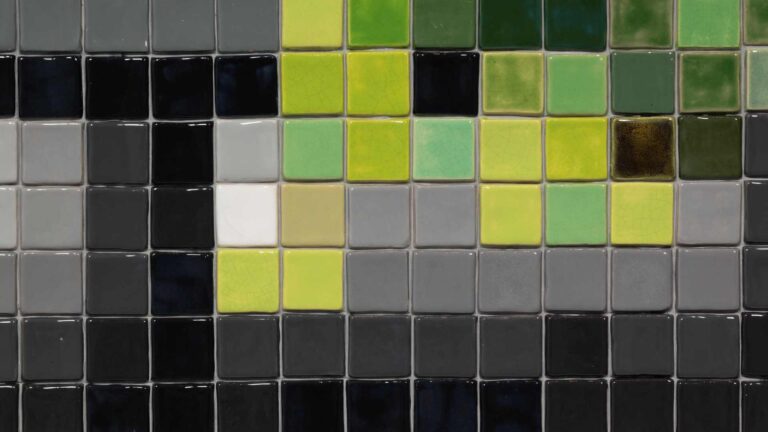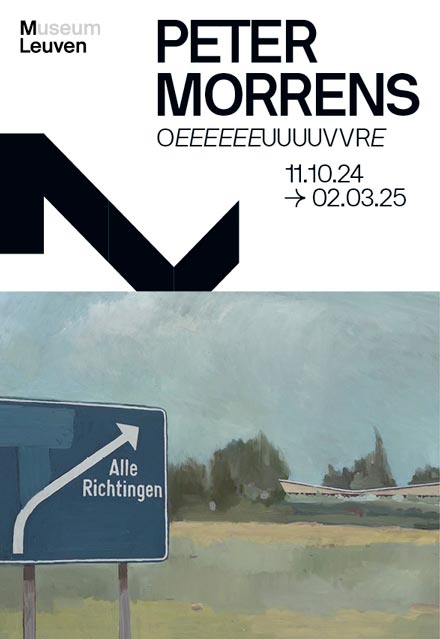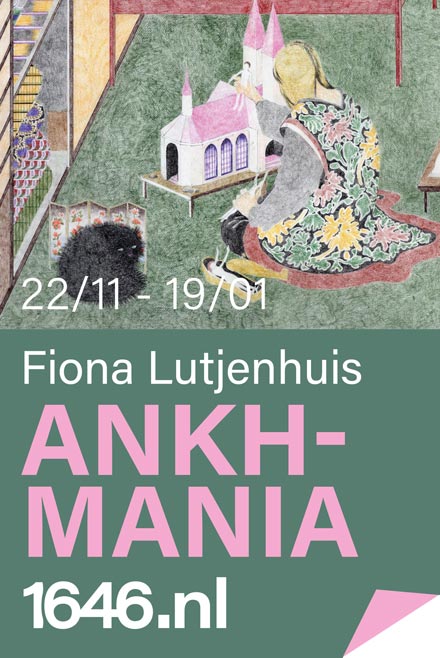Daniel Faria Gallery is pleased to present In Concert, a group exhibition organized by Madeleine Taurins, featuring works by Claire Greenshaw; HaeAhn Paul Kwon Kajander; Jenni Crain; Katie Lyle & Shelby Wright; Leisure (Meredith Carruthers & Susannah Wesley); Robin Cameron & G. William Webb; Robyn Brentano, Andrew Horn & Andy de Groat. This exhibition hinges on the idea of collaboration, bringing together works by artistic duos, artists in romantic partnerships collaborating for the first time, artists who engage directly with the work of other artists, and those whose works are made with friends, students, or children. In Concert refers both to these collaborative processes, but also to the temporality of performance. While some of the works in the exhibition are more traditionally tied to performance and its documentation, the very activity of creating a work with another, or many others, is itself a kind of dance, and the resulting works bear those histories of their making.
HaeAhn Paul Kwon Kajander’s I U Dirt and One’s Choice (both 2022) are made using traditional lacquer techniques learned by the artists in South Korea. Their chief material is the sap from a poison oak native to Asia, which only polymerizes and cures under humid and warm conditions, an environment easily replicated in late-summer in Toronto, where these were made. The artists think of the natural lacquer as a kind of unruly third collaborator in their process, unpredictably shifting due to changes in the weather. I U Dirt and One’s Choice use structural colour pigments, such as powdered jewel beetle wings, which reflect colour differently depending on the orientation of the viewer. IUD forms, based on illustrations found by the artists in a medical journal from the 1980s, are laser cut from mother of pearl inlay, a material commonly used in natural lacquer crafts. Breaking from tradition, the artists have left these forms mostly obscured, only shimmering into appearance for the viewer at the right angle.
While Cameron and Webb have been married for years, and have discussed and written about one another’s work for even longer, Monument to Reproduction (2023) was their first collaboration. The work was made using scavenged materials from an 1872 brick house in Hebron, New York, that the couple was renovating while also undergoing an arduous and unpredictable journey to have their son, Cy. The house offered something to pour themselves into, a reliable fixture in the background of their lives during a difficult time. The sculpture reproduces the brick house in a new form, while also referencing family structures and systems. Whether intentional or not, its form also brings to mind children’s wooden building blocks. Monument to Reproduction was originally installed on the Cherry St. Pier in Philadelphia, in conjunction with Cameron and Webb’s exhibition Little House at PEEP Projects.
Claire Greenshaw’s drawings depict photographs of glaciers—the Athabasca in Alberta and Lyell in California—in exacting detail. Once complete, Greenshaw handed erasers to graduate students in the Visual Arts department of York University, and to her children, and invited them to alter the surface of the graphite drawings. Their own sets of gestures slice through, blur, and smudge the glaciers, creating an abstracted foreground, while also altering the very structure and meaning of the images.
Meredith Carruthers and Susannah Wesley have worked collaboratively under the name “Leisure” since 2004. Their work Why is the history of art so solid? (2023) features a Barbara Hepworth sculpture and an interactive art project by her son Simon Nicholson in which his daughter (Hepworth’s grandchild) sits. Nicholson invented the “Theory of Loose Parts,” which seems to be influenced by growing up in his mother’s studio, and continues to be used in pre-school and primary education environments today. Just as Hepworth was inspired by the materials her children brought to her practice, Nicholson’s daughters were active participants and inspiration for a lot of his work. His theory encourages children to play with “loose parts” in creative ways: outside with materials such as stones and branches, sand and shells, or inside with things like corrugated cardboard, aluminum foil, and string. Wesley and Carruther’s project made with their children, having ideas by handling materials, has been shown in different iterations, and for this exhibition appears in the form of a small book, available at the front desk. Inspired by Nicholson’s approach, as well as Fluxus event scores, the project includes prompts for making artworks and scenarios using things at hand, or one’s imagination.
A Room to Perform by Katie Lyle and Shelby Wright explores how a structure might actively become part of a performance, letting its shape and form determine the way their movements are framed. The structure, in this case, is an 8 x 8 foot “room” made of simple building materials, its dimensions reflecting “the space when we lay down with arms stretched out, or extend one leg back and one arm forward, fitting in just so.”[1]Originally performed in 2018 for SummerWorks Festival in Toronto, the audience experienced Lyle and Wright’s movements through the apertures of said room. While the pair moved within the structure, viewers were invited to walk around its perimeter, different sections of bodies and movements becoming visible as everyone, viewer and performer alike, changed positions. A camera installed on the ceiling captured the room from above, a perspective impossible for any audience member, revealing previously unseen angles, shapes, and connections created between the two bodies and the four walls. Now, six years later, we look down into the room as if looking into a time capsule, watching something unfurl below our own feet.
Directed and filmed by Robyn Brentano and Andrew Horn, Cloud Dance (1980) features Lenore Tawney’s sculpture Four-Armed Cloud (1978-79) within, and through, which, dancer Andy De Groat improvises, his body interacting with the 13,000 linen threads that make up the sculpture. Trained in dance themselves, Brentano and Horn moved the camera in relation to de Groat’s movements, as if in a duet. The editing process was just as responsive, re-arranging the dance chronologically to create a flow between incongruous moments in time and adding blackouts between sequences to create a strong visual rhythm, resulting in what Brentanto refers to as a ”cine-dance.” Musician Michael Galasso improvised in response to, and in concert with, the film, over which Christopher Knowles’ poetry is read aloud by Arby Ovanessian. “Oh thank you very much I love you I am tired. / Get dancing get dancing get dancing get dancing get dancing get dancing,” he recites, as de Groat spins round and round.
Cradle for Harry Bertoia’s Instruments (2019/2021) was originally created for the exhibition SYZYGY, a collaboration between Jenni Crain and Miles Huston at Gordon Robichaux in New York. As suggested by the title, Crain’s wooden armature was built to hold a collection of sounding instruments made by Harry Bertoia for his “Sonambient Sculptures.” Upon Bertoia’s death, these sculptures were transferred to his son, Val, who continued the workings of Bertoia Studio in his barn in Bally, Pennsylvania. Val and his sister Celia became engaged in a lengthy lawsuit regarding their father’s legacy, which resulted in the removal of 70 of the 92 sounding sculptures from the barn and their relocation to Sotheby’s, where they are currently stored. In the vacancy of these 70 works, Val has been making his own interpretations, “an earnest yet contentious attempt to continue the legacy of his father.” “During our visits, Val became our medium to Harry, but in doing so, he filled in the gaps with his own ideas, effectively blurring histories and eroding intent, but also, carrying on a cardinal message,” write Crain and Huston.[2] With the loaned instruments now removed from Crain’s sculpture, what remains are differently sized holes marking their absence. The cradle stands awaiting something to hold.
[1] Katie Lyle and Shelby Wright, Exhibition Text for A Room to Perform, SummerWorks Festival, Toronto, 2018.
[2] Jenni Crain and Miles Huston, Exhibition Text for SYZYGY at Gordon Robichaux, New York, January 20-February 24, 2019.
Claire Greenshaw (b. 1980, Cardiff, UK) is a visual artist and a doctoral candidate in the Department of Visual Arts at York University, where her creative research is supported by the Social Sciences and Humanities Research Council (SSHRC). Her artwork focuses on drawing, the circulation of images, and the experience of time under late capitalism and the Anthropocene. She holds a Bachelor of Fine Art from the Nova Scotia College of Art and Design (Halifax) and Master of Fine Arts from the Glasgow School of Art. Select exhibitions include two seven two (Toronto), Minuseins (Vienna), Contemporary Art Gallery (Vancouver), Neon (Brösarp) and Royal Standard (Liverpool) amongst other presentations across Canada, the USA, UK and Europe.
HaeAhn Paul Kwon Kajander is a Halifax-based, collaborative duo working primarily in site-responsive sculptural installation. Through the threading together of given and family names, their practice complicates the steadfast construction of individual authorship and identity in art and contemporary culture. Their practice responds to processes of urbanization and the history of modernization in Korea. The traditional lacquer technique called Ott-chil is a material and conceptual anchor in their work. They have presented work at Franz Kaka, Toronto (CA), DMZ Open Festival, Paju (KR), SAW, Korean Cultural Centre, Ottawa (CA), Unit 17, Vancouver (CA), Galerie Nicolas Robert, Toronto (CA), Trilobite et le Pneu, Montréal (CA), Art Sonje Centre, South Korea, Jack Barrett Gallery, New York (US), The Small Arms Inspection Building, Mississauga (CA), Julius Caesar, Chicago (US), and Nerri Baranco, Mexico City (MX). In 2024, they will present a solo exhibition at Franz Kaka (Toronto), and in 2025, an institutional solo exhibition at Mercer Union (Toronto).
Jenni Crain (1991–2021) was a New York-based artist, writer, and curator. She received her BFA in Sculpture from Pratt Institute in 2013, and an MA in Curatorial Studies from CCS Bard in 2021. She co-founded and co-directed Topless, a seasonal gallery based in Rockaway Beach, New York, from 2014 to 2016. Crain was the founder and organizer of O.O. & M.M. (Only Once & Many More), an ongoing curatorial project that encourages adaptability and deviation from standardized models of exhibition making. As an artist, Crain’s work has been shown in solo and group exhibitions at the Hessel Museum of Art, Annandale-on-Hudson, New York (2022); Kerry Schuss Gallery, in collaboration with Gordon Robichaux, New York (2022); Pumice Raft, Toronto (2021); La MaMa Galleria, New York (2021); Parker Gallery, Los Angeles (2020); OCTAGON, Milan (2019); Gordon Robichaux, New York (2019, two-person with Miles Huston, 2018); Baba Yaga, Hudson, New York (2018); 321 Gallery, Brooklyn (2017); KANSAS, New York (2016); Y Gallery, New York (2015); and Artist Curated Projects, Los Angeles (2014); among others.
Katie Lyle and Shelby Wright have worked collaboratively since 2015. Together, their work spans visual art, performance, dance, creative writing and installation, addressing themes of cross-disciplinary translation, gesture, shared space and friendship. They created A Room to Perform for SummerWorks 2018, a work that explores how a structure might actively become part of a performance, letting its shape and form determine the way their movements were obscured or framed.
Leisure is a collaborative art practice between Montreal-based artists Meredith Carruthers (b. 1975, St Catherines, ON, Canada) and Susannah Wesley (b. 1976, Simcoe, ON, Canada). Working together under the name “Leisure” since 2004, their approach extends their own conversation and collaboration to include their historical subjects, family members, and community participants. The resulting projects are multidisciplinary in format—from workshops, to published texts, interactive installations, and object-making involving a variety of media.
Robin Cameron (b. 1981, BC, Canada) is a New York based artist that typically works in many media, ranging from printmaking, ceramics and artist books to cyanotypes, slides and video. Cameron received her MFA from Columbia University in 2012 and a BDes from Emily Carr Institute of Art and Design in 2004. Her work is in the permanent collection of the Whitney Museum of American Art and private collections internationally. Cameron has exhibited widely in the US, Canada and abroad, and is well-known for her artist publications, that have appeared at Printed Matter and Library of The Museum of Modern Art.
G. William Webb (b. 1987, Blue Grass, Iowa, USA) lives and works in New York. He is best known for his minimal, considered material and spiritually centered works. He received his MFA from New York University and has held exhibitions with Room East, New York; Galerie Rodolphe Janssen, Brussels; Galerie Joseph Tang, Paris; Franklin Parrasch Gallery, New York; Martos Gallery, New York; Parrasch Heijnen Gallery, Los Angeles; and institutionally at White Flag Projects, St Louis and Emily Harvey Foundation in New York City. His work is in the permanent collection of the Centre Pompidou, Paris.
Robyn Brentano (b. 1943) has served as a non-profit leader and philanthropic advisor in the arts, contemplative education, international development, cultural revitalization, and refugee resettlement for more than 45 years. At the same time, she performed in dance-theater productions by Robert Wilson, Kenneth King, Andy de Groat, and others; directed experimental dance films (three with Andrew Horn) and documentaries on Buddhist themes, including The Sound of Wisdom, about the historic encounter between composers Phillip Glass, Terry Riley, Pauline Oliveros, David Hykes, and the monks of Gyuto Tantric Monastery. She has produced and co-curated numerous visual and performing arts programs for 112 Workshop, the Dia Arts Foundation, the Meridian Trust London, Tibet House NY, and others. She co-curated Outside the Frame, the first major exhibition of performance art in America for the Cleveland Center for Contemporary Art and The Invisible Thread, an exhibition at Snug Harbor Cultural Center of 52 contemporary artists influenced by Buddhism. She also served on the steering team for The Buddhism Project, a five-year initiative involving 20 museums and cultural centers in New York City. Brentano holds an MA in Performance Studies from New York University and is writing a book about the preservation of the Tibetan monastic education system in exile.
Andrew Horn (1952–2019) was a film producer, director, and writer. His films include the documentaries East Side Story (1997), The Nomi Song (2004), which won the Teddy Award at the Berlin Film Festival, and We Are Twisted F–king Sister! (2014), which premiered at the International Documentary Festival in Amsterdam. He also directed the features Doomed Love (1984) and Big Blue (1988). A graduate of New York University School of the Arts, his junior thesis film was nominated for an Academy Award. He co-directed three experimental dance films with Robyn Brentano on the choreographers Kenneth King, Andy de Groat, and Carter Frank. He moved from New York to Berlin in 1989 on a DAAD Berlin Artist Exchange scholarship and stayed on, working as a filmmaker, writer, and journalist. He was an Emmy award-winning film researcher for projects for BBC, ZDF, Arte, Channel 4, PBS, HBO, the Paul Robeson Foundation, Michael Moore and Spike Lee. In 2013, he shared a News & Documentary Emmy for his work on an American Experience installment about Jesse Owens. Horn’s films have been shown at the Berlin Film Festival and appear in the collections of The Museum of Modern Art, the BFI, Berlin Film Museum, Cinematheque Français, Munich Film Museum, and the Lincoln Center Library of Performing Arts.
Andy de Groat (1947–2019) was studying at the New York School of Visual Arts in 1967, when he met theatre director Robert Wilson, and joined his company as an artistic collaborator and performer in The King of Spain (1968) and The Life and Times of Sigmund Freud (1969), and then as dancer and choreographer for all the productions from Deafman Glance (1970) and A Letter for Queen Victoria (1974), to Einstein on the Beach (1976), created for the Avignon Festival. Further developing his signature choreography based on spinning, he founded Andy de Groat and Dancers in 1973. The company performed at the International Festival of the Arts in Shiraz, Iran in 1975. In 1981, he received a grant from the Guggenheim Foundation for his choreographic research and moved to France where he created new works for his company red notes, including several for the Paris Opera stars Jean Guizerix, Wilfride Piollet, and Jean-Christophe Paré, the Choreographic Research Group of the Paris Opera (GRCOP), the Scala in Milan, the Ballet du Nord (Roubaix), all five French national dance conservatories, innumerable workshops, and creations and repertory for Wah Loo Tin Tin Co., a Montauban-based company of young performers. His work totals over sixty creations that have been presented in twenty countries and have periodically questioned the repertory and heritage of dance. His company worked regularly on lyrical productions starting in 1988, such as The Magic Flute (Mozart) with Robert Wilson at the Opera Bastille, Paris, The Rake’s Progress (Stravinsky) with Alfredo Arias for the Aix-en-Provence Festival of Lyric Art and at the Operas of Lyon, Genoa and Montpellier, Aïda (Verdi) with Klaus Michael Grüber for the Amsterdam Opera. He was nominated Officer in the Order of Arts and Letters in 1985, and Commander in 2000.
